

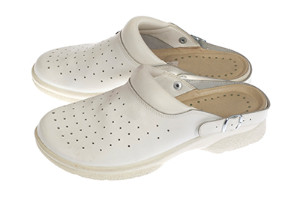 Women’s feet have increased two sizes since the 1970s, and yet their shoe sizes haven’t. Women who have larger feet are, unfortunately, left out and have few options. Some girls have resorted to wearing boys’ shoes, which are not properly fitted for women; this can lead to an increase risk of falling and other issues. Several experts blame this on overseas production and it not being cost-effective to make bigger shoes. Bigger shoes cost more to make; however, they are accounting for larger percentages in the footwear market. A few experts recommend buying from German companies, who have kept up with foot size increases. It is important that not only women, but also men, wear properly fitted shoes. Shoes that are too small can lead to issues like plantar fasciitis, corns, hammertoes, and a number of ailments that cause foot pain.
Women’s feet have increased two sizes since the 1970s, and yet their shoe sizes haven’t. Women who have larger feet are, unfortunately, left out and have few options. Some girls have resorted to wearing boys’ shoes, which are not properly fitted for women; this can lead to an increase risk of falling and other issues. Several experts blame this on overseas production and it not being cost-effective to make bigger shoes. Bigger shoes cost more to make; however, they are accounting for larger percentages in the footwear market. A few experts recommend buying from German companies, who have kept up with foot size increases. It is important that not only women, but also men, wear properly fitted shoes. Shoes that are too small can lead to issues like plantar fasciitis, corns, hammertoes, and a number of ailments that cause foot pain.
Getting the right shoe size is an important part of proper foot health. Seek the assistance of Dr. Sybil J. Fisher from Texas. Our doctor will provide the care you need to keep you pain-free and on your feet.
Getting the Right Shoe Size
There are many people who wear shoes that are the incorrect size, negatively affecting their feet and posture. Selecting the right shoes is not a difficult process, so long as you keep several things in mind when it comes to choosing the right pair.
As our feet hold our body weight and keep us moving, it is important to treat them right. Picking the right pair of shoes can provide your feet comfort and mobility without pain.
If you have any questions, please feel free to contact one of our offices located in Houston and Sugar Land, TX . We offer the newest diagnostic and treatment technologies for all your foot care needs.
 Do your heels hurt after the end of the day? You may be suffering from plantar fasciitis, heel pain that is caused by stress on the tissues in the heel. If so, you are not alone. Plenty of people report that they suffer from heel pain on a daily basis. Many times this is caused by improper footwear that offers little-to-no support. Most podiatrists recommend good quality footwear with custom made arch support to help relieve plantar fasciitis. It is important though to see a podiatrist who can check if you are suffering from plantar fasciitis. They can then offer personalized advice and treatment for your heel pain.
Do your heels hurt after the end of the day? You may be suffering from plantar fasciitis, heel pain that is caused by stress on the tissues in the heel. If so, you are not alone. Plenty of people report that they suffer from heel pain on a daily basis. Many times this is caused by improper footwear that offers little-to-no support. Most podiatrists recommend good quality footwear with custom made arch support to help relieve plantar fasciitis. It is important though to see a podiatrist who can check if you are suffering from plantar fasciitis. They can then offer personalized advice and treatment for your heel pain.
Plantar fasciitis can be very painful and inconvenient. If you are experiencing heel pain or symptoms of plantar fasciitis, contact Dr. Sybil J. Fisher from Texas. Our doctor can provide the care you need to keep you pain-free and on your feet.
What Is Plantar Fasciitis?
Plantar fasciitis is the inflammation of the thick band of tissue that runs along the bottom of your foot, known as the plantar fascia, and causes mild to severe heel pain.
What Causes Plantar Fasciitis?
How Can It Be Treated?
While very treatable, plantar fasciitis is definitely not something that should be ignored. Especially in severe cases, speaking to your doctor right away is highly recommended to avoid complications and severe heel pain. Your podiatrist can work with you to provide the appropriate treatment options tailored to your condition.
If you have any questions please feel free to contact one of our offices located in Houston and Sugar Land, TX . We offer the newest diagnostic and treatment technologies for all your foot and ankle needs.
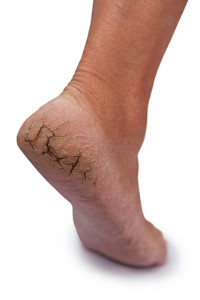 While cracked heels affect people of all ages, they tend to be more prevalent in women compared to men. Nevertheless, cracked heels are much more likely to develop in those who stand for long periods of time, or wear backless shoes that don’t cover the heel. If you are suffering from dry, cracked heels; you should try to soak and exfoliate them routinely. This should be done using a pumice stone or loofah as these are both very effective in removing dry skin. Another tip is to moisturize your feet and cover them overnight using socks.
While cracked heels affect people of all ages, they tend to be more prevalent in women compared to men. Nevertheless, cracked heels are much more likely to develop in those who stand for long periods of time, or wear backless shoes that don’t cover the heel. If you are suffering from dry, cracked heels; you should try to soak and exfoliate them routinely. This should be done using a pumice stone or loofah as these are both very effective in removing dry skin. Another tip is to moisturize your feet and cover them overnight using socks.
Cracked heels are unsightly and can cause further damage to your shoes and feet. If you have any concerns, contact Dr. Sybil J. Fisher from Texas. Our doctor can provide the care you need to keep you pain-free and on your feet.
Cracked Heels
Cracked heels appear unappealing and can make it harder for you walk around in sandals. Aside from looking unpleasant, cracked heels can also tear stockings, socks, and wear out your shoes. There are several methods to help restore a cracked heel and prevent further damage.
How Do You Get Them?
Dry skin is the number one culprit in creating cracked heels. Many athletes, walkers, joggers, and even swimmers suffer from cracked heels. Age and skin oil production play a role to getting cracked heels as well.
Promote Healing
Over the counter medicines can help, especially for those that need instant relief or who suffer from chronic dry feet.
Wear Socks – Wearing socks with medicated creams helps lock in moisture.
Moisturizers – Applying both day and night will help alleviate dryness which causes cracking.
Pumice Stones – These exfoliate and remove dead skin, which allows for smoother moisturizer application and better absorption into the skin.
Change in Diet
Eating healthy with a well-balanced diet will give the skin a fresh and radiant look. Your body responds to the kinds of food you ingest. Omega-3 fatty acids and zinc supplements can also revitalize skin tissue.
Most importantly, seek professional help if unsure how to proceed in treating cracked heels. A podiatrist will help you with any questions or information needed.
If you have any questions, please feel free to contact one of our offices located in Houston and Sugar Land, TX . We offer the newest diagnostic and treatment technologies for all your foot care needs.
 Injuries are a common problem for athletes of all sports. It is important that you take preventative measures so that you can avoid encountering any injuries such as sore knees and sprained ankles. One of the most common causes of injuries for runners is overuse. Overuse injuries are the result of pushing your muscles, tendons, and bones past the limit they are used to. A tip to avoid overuse injuries is to ease your way into a new running routine so that you are not doing too much, too soon. Another helpful tip is to replace your sneakers after every 500 miles of use, since worn-out sneakers make you much more susceptible to injury.
Injuries are a common problem for athletes of all sports. It is important that you take preventative measures so that you can avoid encountering any injuries such as sore knees and sprained ankles. One of the most common causes of injuries for runners is overuse. Overuse injuries are the result of pushing your muscles, tendons, and bones past the limit they are used to. A tip to avoid overuse injuries is to ease your way into a new running routine so that you are not doing too much, too soon. Another helpful tip is to replace your sneakers after every 500 miles of use, since worn-out sneakers make you much more susceptible to injury.
Exercising your feet regularly with the proper foot wear is a great way to prevent injuries. If you have any concerns about your feet, contact Dr. Sybil J. Fisher of Texas. Our doctor will treat your foot and ankle needs.
How to Prevent Running Injuries
Many common running injuries are caused by overuse and overtraining. When the back of the kneecap starts wearing out and starts causing pain in your knee, this is commonly referred to as runner’s knee. Runner’s knee is a decrease in strength in your quadriceps and can occur if you’re not wearing properly fitted or supporting shoes. To prevent runner’s knee, focusing on hip strengthening is a good idea, as well as strengthening your quads to keep the kneecaps aligned.
What Are Some Causes of Running Injuries?
- One cause of a common running injury is called iliotibial band syndrome.
- Plantar fasciitis is also another common injury.
- Stress fractures can occur from overtraining, lack of calcium, or even your running style.
Best Ways to Prevent Running Injuries
- Wear footwear that fits properly and suits your running needs.
- Running shoes are the only protective gear that runners have to safeguard them from injury.
- Make a training schedule. Adding strengthening exercises as well as regular stretching can help keep you strong and limber and can lessen the possibility of injuries.
- Stretching keeps muscles limber; this will help you gain better flexibility.
If you have any questions please feel free to contact one of our offices located in Houston and Sugar Land, TX . We offer the newest diagnostic and treatment technologies for all your foot and ankle needs.
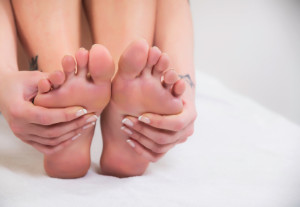 When we use our feet everyday, it is almost impossible to avoid feeling soreness in them every once in awhile. Fortunately, there are ways you can help alleviate some of the pain you may be feeling after a long day of walking. Drinking green tea can help your body relax, and it will also give you the antioxidants needed to reduce inflammation. If the rest and relaxation isn’t enough, you may find that a massage may be useful. You can try placing a foam roller on the floor and moving it back and forth with your foot in order to gently massage it. These foam rollers may be used while hot or cold, and they will help with any pain or soreness you are feeling.
When we use our feet everyday, it is almost impossible to avoid feeling soreness in them every once in awhile. Fortunately, there are ways you can help alleviate some of the pain you may be feeling after a long day of walking. Drinking green tea can help your body relax, and it will also give you the antioxidants needed to reduce inflammation. If the rest and relaxation isn’t enough, you may find that a massage may be useful. You can try placing a foam roller on the floor and moving it back and forth with your foot in order to gently massage it. These foam rollers may be used while hot or cold, and they will help with any pain or soreness you are feeling.
Everyday foot care is very important to prevent infection and other foot ailments. If you need your feet checked, contact Dr. Sybil J. Fisher from Texas. Our doctor can provide the care you need to keep you pain-free and on your feet.
Everyday Foot Care
Often, people take care of their bodies, face and hair more so than they do for their feet. But the feet are a very important aspect of our bodies, and one that we should pay more attention to. Without our feet, we would not be able to perform most daily tasks.
It is best to check your feet regularly to make sure there are no new bruises or cuts that you may not have noticed before. For dry feet, moisturizer can easily be a remedy and can be applied as often as necessary to the affected areas. Wearing shoes that fit well can also help you maintain good foot health, as well as making it easier to walk and do daily activities without the stress or pain of ill-fitting shoes, high heels, or even flip flops. Wearing clean socks with closed shoes is important to ensure that sweat and bacteria do not accumulate within the shoe. Clean socks help to prevent Athlete’s foot, fungi problems, bad odors, and can absorb sweat.
If you have any questions please feel free to contact one of our offices located in Houston and Sugar Land, TX . We offer the newest diagnostic and treatment technologies for all your foot and ankle needs.
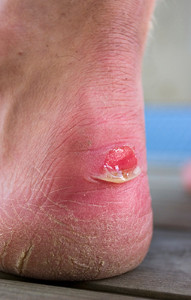 It is no secret that the root cause of blisters is increased friction, but it is important to know what is causing the friction. It has been found that the four main causes of friction on the feet are: shoes, socks, sweat, and restricted foot motion. Shoes that squeeze the toes together have the power to increase the amount of friction between the toes, which may result in blisters. According to a study involving military personnel, low friction insoles have been found to reduce blister development. A similar study has shown that wearing double layer socks prevented the military personnel from getting blisters as well.
It is no secret that the root cause of blisters is increased friction, but it is important to know what is causing the friction. It has been found that the four main causes of friction on the feet are: shoes, socks, sweat, and restricted foot motion. Shoes that squeeze the toes together have the power to increase the amount of friction between the toes, which may result in blisters. According to a study involving military personnel, low friction insoles have been found to reduce blister development. A similar study has shown that wearing double layer socks prevented the military personnel from getting blisters as well.
Blisters are prone to making everyday activities extremely uncomfortable. If your feet are hurting, contact Dr. Sybil J. Fisher of Texas. Our doctor can provide the care you need to keep you pain-free and on your feet.
Foot Blisters
Foot blisters develop as a result of constantly wearing tight or ill-fitting footwear. This happens due to the constant rubbing from the shoe, which can often lead to pain.
What Are Foot Blisters?
A foot blister is a small fluid-filled pocket that forms on the upper-most layer of the skin. Blisters are filled with clear fluid and can lead to blood drainage or pus if the area becomes infected.
How Do Blisters Form?
Blisters on the feet are often the result of constant friction of skin and material, usually by shoe rubbing. Walking in sandals, boots, or shoes that don’t fit properly for long periods of time can result in a blister. Having consistent foot moisture and humidity can easily lead to blister formation.
Prevention & Treatment
It is important to properly care for the affected area in order to prevent infection and ease the pain. Do not lance the blister and use a Band-Aid to provide pain relief. Also, be sure to keep your feet dry and wear proper fitting shoes. If you see blood or pus in a blister, seek assistance from a podiatrist.
If you have any questions, please feel free to contact one of our offices located in Houston and Sugar Land, TX . We offer the newest diagnostic and treatment technologies for all your foot care needs.
 Walking can provide several benefits to your body. Following a walking routine can help lower your risk of diseases, strengthen your heart, prevent dementia, and boost your energy levels. A good walking routine starts with having healthy feet. Fortunately, there are some tips you can follow to make sure your feet are taken care of. Prior to walking, you should make sure that you are not cutting your toenails too short. Toenails that are short may lead to ingrown toenails and pain. Another tip is to wear breathable socks. This will help prevent unpleasant odors, blisters, and rashes. Lastly, you should make sure you keep yourself hydrated in order to help avoid getting cracked feet.
Walking can provide several benefits to your body. Following a walking routine can help lower your risk of diseases, strengthen your heart, prevent dementia, and boost your energy levels. A good walking routine starts with having healthy feet. Fortunately, there are some tips you can follow to make sure your feet are taken care of. Prior to walking, you should make sure that you are not cutting your toenails too short. Toenails that are short may lead to ingrown toenails and pain. Another tip is to wear breathable socks. This will help prevent unpleasant odors, blisters, and rashes. Lastly, you should make sure you keep yourself hydrated in order to help avoid getting cracked feet.
Everyday foot care is very important to prevent infection and other foot ailments. If you need your feet checked, contact Dr. Sybil J. Fisher from Texas. Our doctor can provide the care you need to keep you pain-free and on your feet.
Everyday Foot Care
Often, people take care of their bodies, face and hair more so than they do for their feet. But the feet are a very important aspect of our bodies, and one that we should pay more attention to. Without our feet, we would not be able to perform most daily tasks.
It is best to check your feet regularly to make sure there are no new bruises or cuts that you may not have noticed before. For dry feet, moisturizer can easily be a remedy and can be applied as often as necessary to the affected areas. Wearing shoes that fit well can also help you maintain good foot health, as well as making it easier to walk and do daily activities without the stress or pain of ill-fitting shoes, high heels, or even flip flops. Wearing clean socks with closed shoes is important to ensure that sweat and bacteria do not accumulate within the shoe. Clean socks help to prevent Athlete’s foot, fungi problems, bad odors, and can absorb sweat.
If you have any questions please feel free to contact one of our offices located in Houston and Sugar Land, TX . We offer the newest diagnostic and treatment technologies for all your foot and ankle needs.
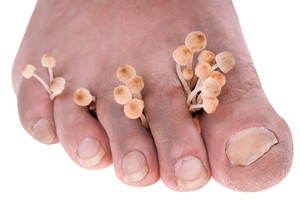 Many people who have toenail fungus tend to get it by walking barefoot in public showers, hotels, or by getting a pedicure. In order to reduce your risk of catching a fungus, you should always be sure to wear a pair of flip flops while showering in public areas. There are some tell-tale signs of toenail fungus, and if you have any of them you may want to see a podiatrist to go over treatment options. One of the most obvious signs of toenail fungus is a change in the color of your toenail; a nail that has a fungus may begin to turn white, yellow, or brown. Another sign may be a change in the thickness of your nail. If you suspect you have toenail fungus, you should try to rid yourself of the condition sooner rather than later in order to prevent it from worsening.
Many people who have toenail fungus tend to get it by walking barefoot in public showers, hotels, or by getting a pedicure. In order to reduce your risk of catching a fungus, you should always be sure to wear a pair of flip flops while showering in public areas. There are some tell-tale signs of toenail fungus, and if you have any of them you may want to see a podiatrist to go over treatment options. One of the most obvious signs of toenail fungus is a change in the color of your toenail; a nail that has a fungus may begin to turn white, yellow, or brown. Another sign may be a change in the thickness of your nail. If you suspect you have toenail fungus, you should try to rid yourself of the condition sooner rather than later in order to prevent it from worsening.
For more information about treatment, contact Dr. Sybil J. Fisher of Texas. Our doctor can provide the care you need to keep you pain-free and on your feet.
Toenail Fungus Treatment
Toenail fungus is a condition that affects many people and can be especially hard to get rid of. Fortunately, there are several methods to go about treating and avoiding it.
Antifungals & Deterrence
Oral antifungal medicine has been shown to be effective in many cases. It is important to consult with a podiatrist to determine the proper regiment for you, or potentially explore other options.
Applying foot powder on the feet and shoes helps keep the feet free of moisture and sweat.
Sandals or open toed shoes – Wearing these will allow air movement and help keep feet dry. They also expose your feet to light, which fungus cannot tolerate. Socks with moisture wicking material also help as well.
If you have any questions please feel free to contact one of our offices located in Houston and Sugar Land, TX . We offer the newest diagnostic tools and technology to treat your foot and ankle needs.
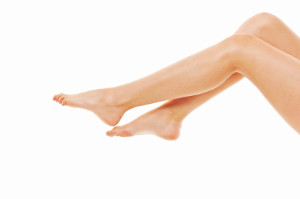 An ingrown toenail is something that may be preventable by taking the right steps. One of the most important precautions you can take to avoid getting an ingrown toenail is to make sure your shoes fit properly. Your shoes should have space in the front so that your toes have room to move around. Your toes should be able to “rest flat and straight” inside of your shoe. Another way to prevent ingrown toenails is to cut your toenails straight across instead of in a rounded shape. Cutting them straight across will allow your nails to grow out correctly, instead of growing down into your toe. Although there are ways you can prevent ingrown toenails, you should always see a podiatrist if you see any signs of infection.
An ingrown toenail is something that may be preventable by taking the right steps. One of the most important precautions you can take to avoid getting an ingrown toenail is to make sure your shoes fit properly. Your shoes should have space in the front so that your toes have room to move around. Your toes should be able to “rest flat and straight” inside of your shoe. Another way to prevent ingrown toenails is to cut your toenails straight across instead of in a rounded shape. Cutting them straight across will allow your nails to grow out correctly, instead of growing down into your toe. Although there are ways you can prevent ingrown toenails, you should always see a podiatrist if you see any signs of infection.
Ingrown toenails can become painful if they are not treated properly. For more information about ingrown toenails, contact Dr. Sybil J. Fisher of Texas. Our doctor can provide the care you need to keep you pain-free and on your feet.
Ingrown Toenails
Ingrown toenails occur when a toenail grows sideways into the bed of the nail, causing pain, swelling, and possibly infection.
Causes
Prevention
Because ingrown toenails are not something found outside of shoe-wearing cultures, going barefoot as often as possible will decrease the likeliness of developing ingrown toenails. Wearing proper fitting shoes and using proper cutting techniques will also help decrease your risk of developing ingrown toenails.
Treatment
Ingrown toenails are a very treatable foot condition. In minor cases, soaking the affected area in salt or antibacterial soaps will not only help with the ingrown nail itself, but also help prevent any infections from occurring. In more severe cases, surgery is an option. In either case, speaking to your podiatrist about this condition will help you get a better understanding of specific treatment options that are right for you.
If you have any questions please feel free to contact one of our offices located in Houston and Sugar Land, TX . We offer the newest diagnostic and treatment technologies for all your foot and ankle needs.
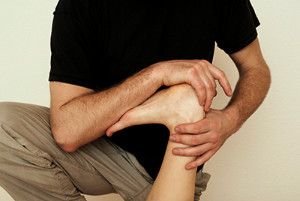 During the winter season at the beginning of the year, many people strive to get into shape for the upcoming summer season. Before jumping straight into working out however, many podiatrists agree that it is important to warm up and stretch properly. Injuries such as stress fractures, tendonitis, and plantar fasciitis are all more likely to occur if the feet are not stretched properly. In addition to stretching and warming up, wearing supportive sneakers and slowly increasing high impact activities can also minimize your risk of suffering these injuries.
During the winter season at the beginning of the year, many people strive to get into shape for the upcoming summer season. Before jumping straight into working out however, many podiatrists agree that it is important to warm up and stretch properly. Injuries such as stress fractures, tendonitis, and plantar fasciitis are all more likely to occur if the feet are not stretched properly. In addition to stretching and warming up, wearing supportive sneakers and slowly increasing high impact activities can also minimize your risk of suffering these injuries.
Stretching the feet is a great way to prevent injuries. If you have any concerns with your feet consult with Dr. Sybil J. Fisher from Texas. Our doctor will assess your condition and provide you with quality foot and ankle treatment.
Stretching the Feet
Being the backbone of the body, the feet carry your entire weight and can easily become overexerted, causing cramps and pain. As with any body part, stretching your feet can serve many benefits. From increasing flexibility to even providing some pain relief, be sure to give your feet a stretch from time to time. This is especially important for athletes or anyone performing aerobic exercises, but anyone experiencing foot pain or is on their feet constantly should also engage in this practice.
Great ways to stretch your feet:
Individuals who tend to their feet by regular stretching every day should be able to minimize foot pain and prevent new problems from arising.
If you have any questions, please feel free to contact one of our offices located in Houston and Sugar Land, TX . We offer the newest diagnostic and treatment technologies for all your foot care needs.
Copyright © 2016 S.J. Fisher DPM | Site Map | Design by: Podiatry Content Connection